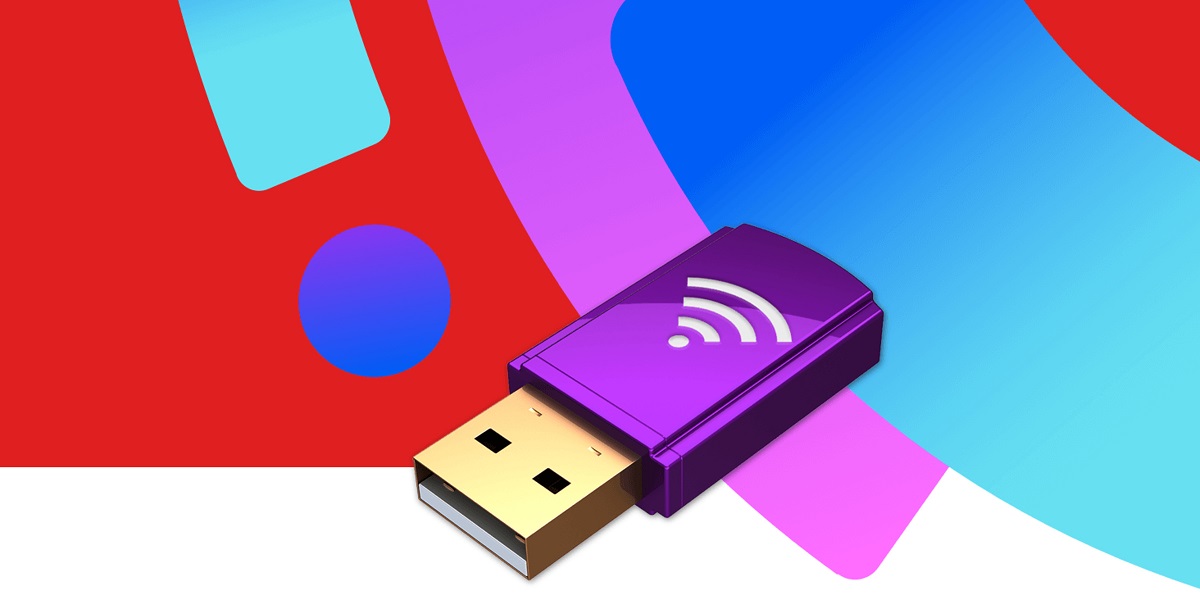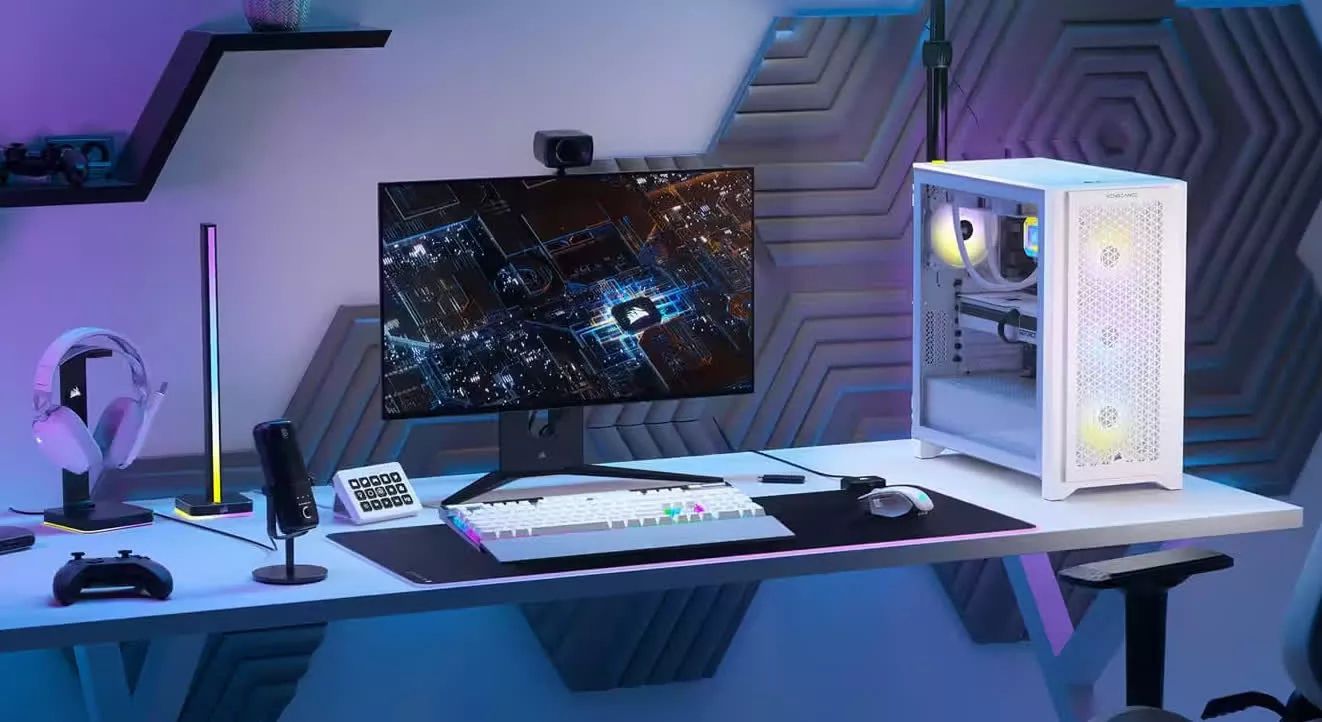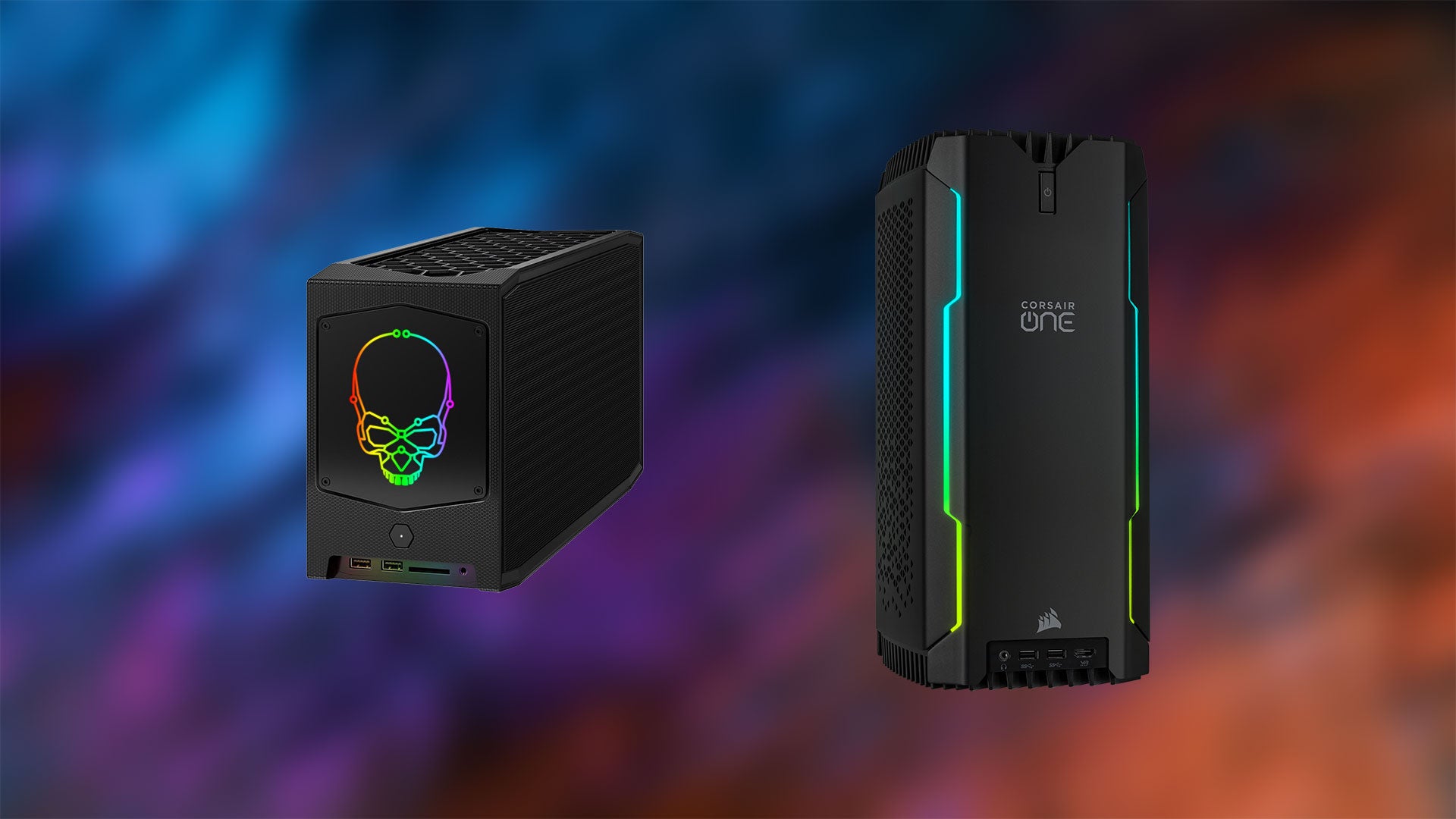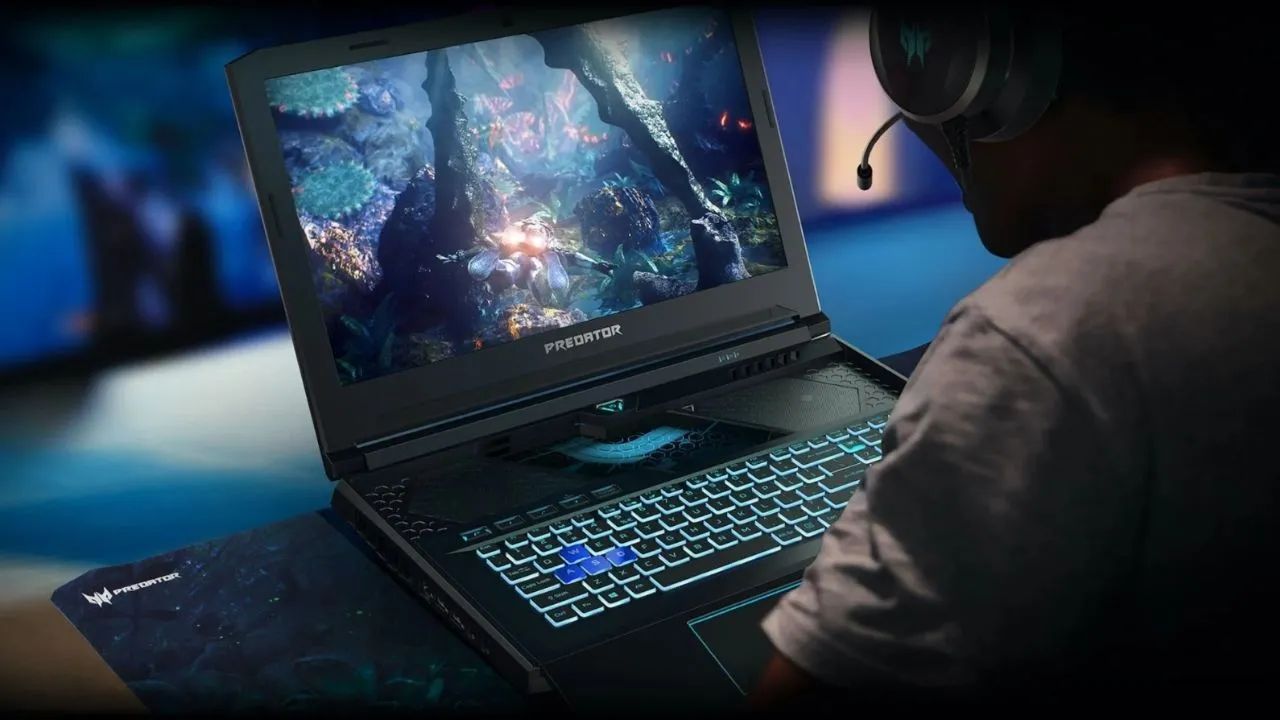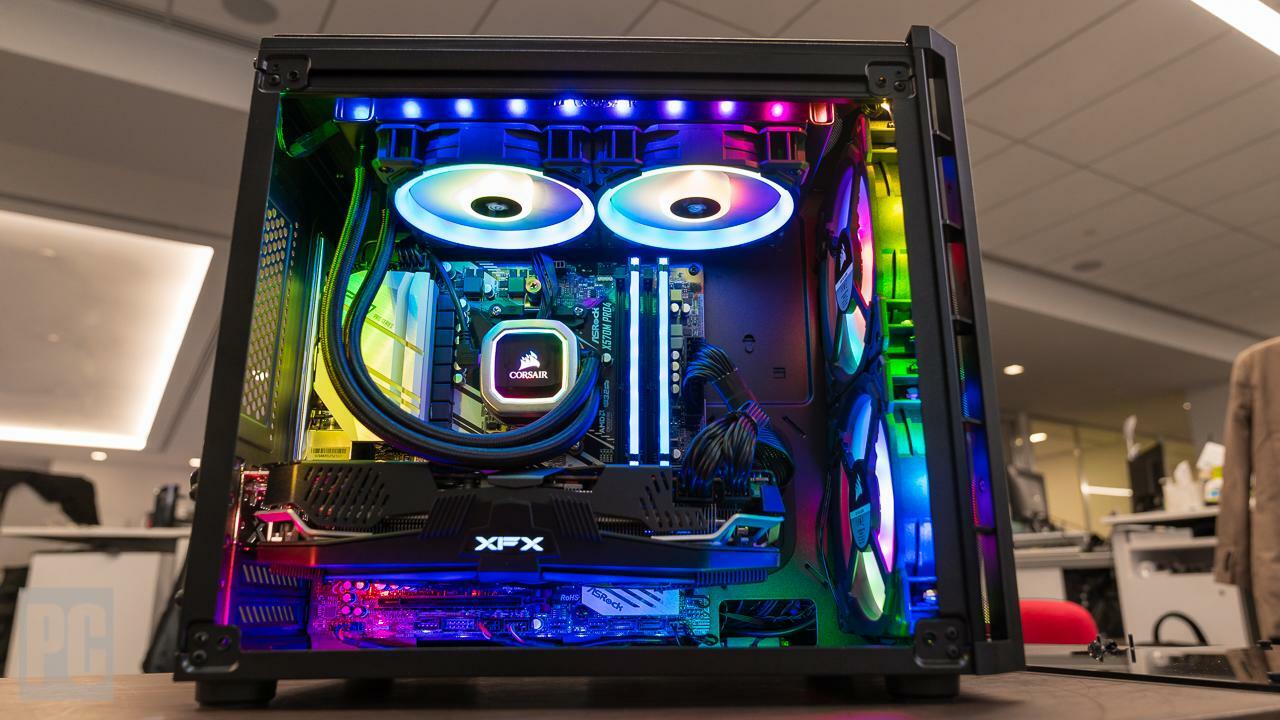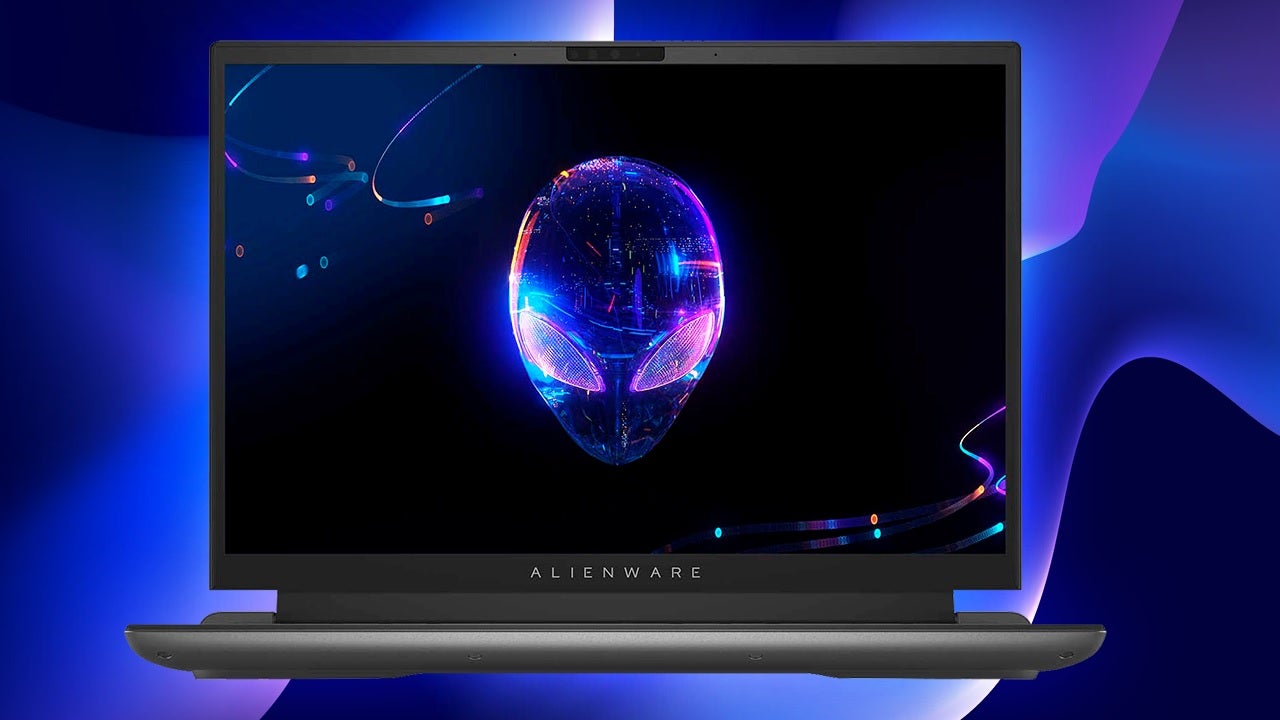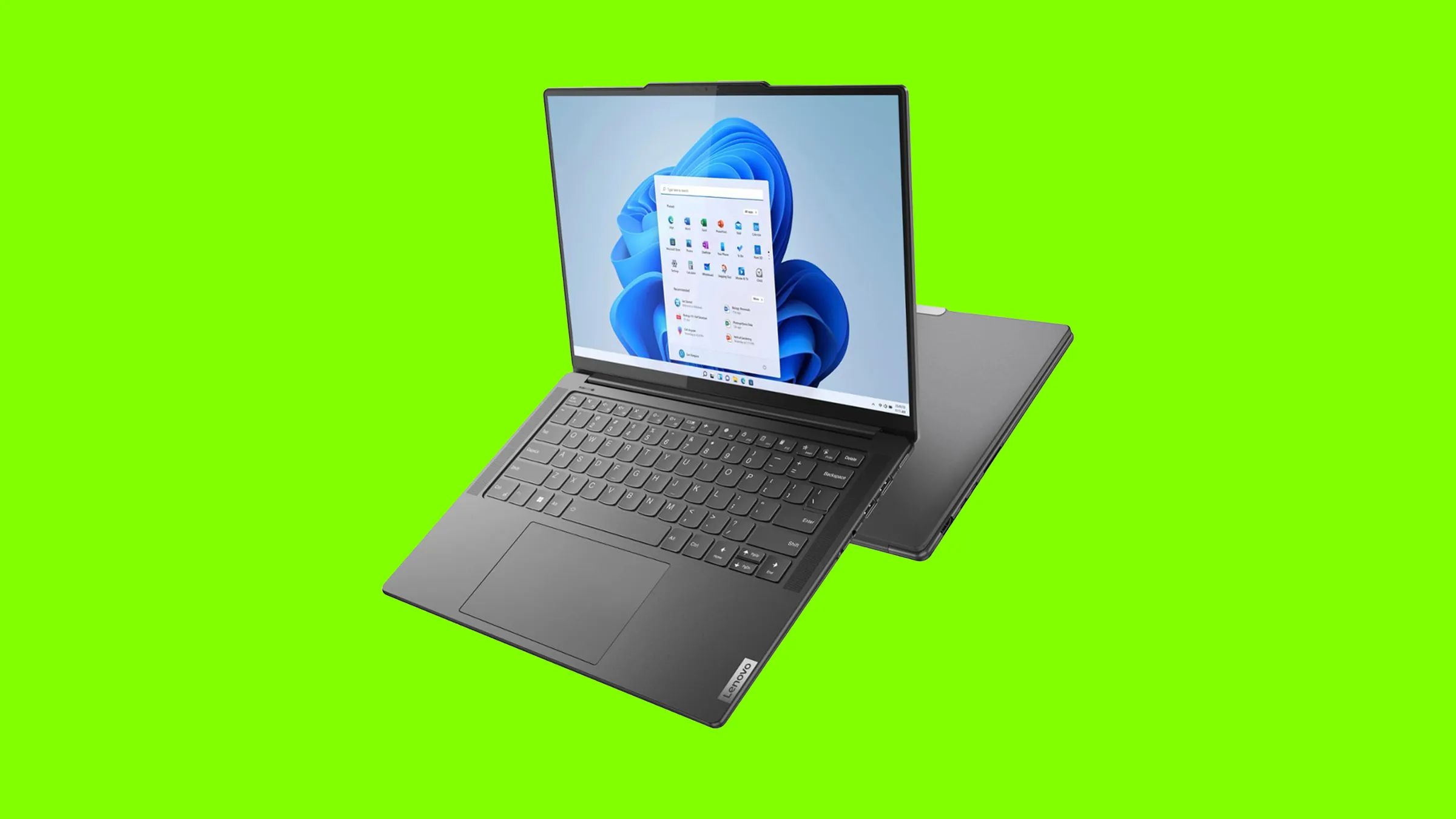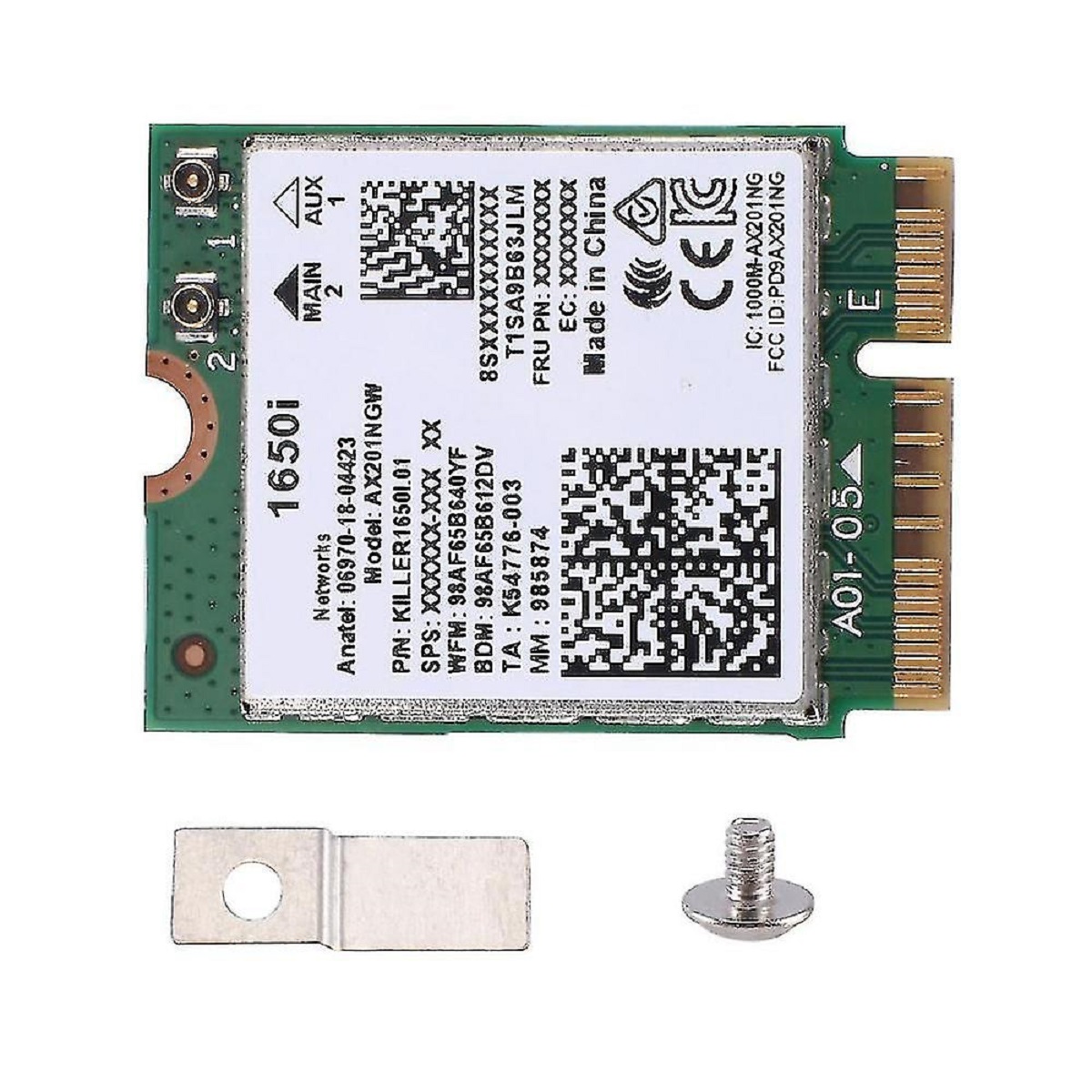Keeping the drivers on your Windows 10 system up to date is essential for maintaining optimal performance and ensuring compatibility with new software and hardware. When it comes to audio, graphics, and Wi-Fi drivers, timely updates become even more crucial. That’s because having no sound, experiencing issues with things being displayed on our screens, or not being able to connect to the internet are the three things that can stop us in our tracks and significantly reduce our productivity.
In this post, we will guide you through the process of updating drivers on your Windows 10 computer via two different methods, which will help you keep your PC’s hardware components running smoothly and make the most of their capabilities.
The Role of Drivers in System Performance
Drivers play a crucial role in keeping things running smoothly on a Windows computer. They are like the unsung heroes of your operating system, ensuring that your hardware and software can communicate effectively. Without them, your computer would be like a ship lost at sea – no direction, no purpose.
When it comes to Windows 10, updating drivers is essential to maintain optimal system performance. It’s like giving your computer a tune-up, making sure all the nuts and bolts are tightened, and everything is firing on all cylinders. So, let’s dive into some specific drivers that you need to keep up to date – audio, graphics, and Wi-Fi.
Why Update Audio Drivers?
Getting your audio drivers updated serves two main purposes:
1. Enhances audio quality and compatibility
Manufacturers often release new or improved features through driver updates, so installing the enhanced driver version lets you enjoy the new functionality
2. Fixes audio-related issues and bugs
When you experience sound issues during online calls or media playback, the cause is oftentimes a faulty driver. It may be damaged, outdated or sometimes even missing entirely. Installing the right driver is usually enough to get the issue resolved.
Updating your audio drivers not only ensures that your sound quality remains top-notch but also improves compatibility with the latest audio technologies. Whether you’re a music enthusiast, a movie lover, or just like to hear the soothing sounds of your Windows alerts, having up-to-date audio drivers can make all the difference.
Why Update Graphics Drivers?
There are also two essential reasons for a Windows computer user to want their graphics drivers updated.
1. Improves visual performance and stability
The newer or simply more stable drivers help make sure that everything looks smooth and polished on your PC screen for you. Whether you’re watching a movie, playing a game, or working on graphic-intensive tasks, having the latest graphics drivers ensures that your visuals are sharp, vibrant, and glitch-free.
2. Ensures compatibility with new software and games
Newer versions of your favorite applications and games often rely on updated graphics drivers to take full advantage of their features. So, to experience the latest and greatest that the digital world has to offer, you need to make sure your graphics drivers are up to date.
Once your graphics drivers are updated, be sure to check out the list of essential Windows apps that will let you test your enhanced graphics to the max.
Why Update Wi-Fi Drivers?
Wi-Fi drivers may not be as glamorous as their graphics counterparts, but they play a crucial role in keeping you connected to all things internet. Here’s what updating them does to improve your PC experience.
1. Enhances network connectivity and speed
Updating your Wi-Fi drivers can give your internet connection a swift kick in the pixels. Newer drivers often come equipped with better algorithms and optimizations, allowing for faster and more stable Wi-Fi connections. Say goodbye to those endless buffering moments.
2. Resolves Wi-Fi-related issues and connectivity problems
Outdated drivers can be the sneaky culprits behind your Wi-Fi woes. From random disconnections to weak signal strength, outdated drivers can cause a whole range of connectivity problems. Updating them can often work like a magic spell, banishing those Wi-Fi demons and restoring harmony to your internet life.
Ways to Update Drivers on a Windows Computer
There are two main ways you can go about updating drivers on your PC.
Option #1 is to manually check the driver for each device you’d like to update, identify the device model, and locate the proper driver update for it on the device manufacturer’s website. While this option is available to all, since it doesn’t require any additional software to be installed besides what already comes with Windows, there are some drawbacks to this method.
First of all, it requires some technical knowledge, as getting an incorrect driver version installed can cause the device to malfunction or even lead to global performance issues. Searching the web for the right driver can also bring you to a fake website and cause you to install a driver bundled with malware.
If you are in any doubt about your ability to overcome these potential risks, then the second option will be a better choice for you. Option #2 may be your only choice when you use the “Update” option next to the driver you find in the Device Manager, and Windows tells you that your driver does not need to be updated.
Option #2 is to use an automated software solution to search for and update drivers. A reliable software tool from a trusted developer, like Auslogics Driver Updater, takes the effort out of the task. It will match recommended updates to your devices and install them safely and efficiently.
Let’s go over the two options in more detail.
How to Update Audio, Graphics and Wi-Fi Drivers on Windows 10 Manually
Here are the steps you need to take to update your drivers manually:
Step 1 Identify the current driver version installed on your PC. Do this by finding the device in the Device Manager, right-clicking on it and looking at the Driver tab.
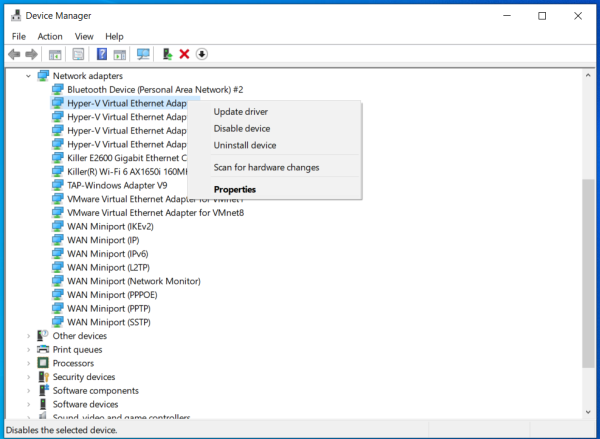

Note: When you right-click on the device, you will see the Update option at the top of the menu, but unless the device is marked with an exclamation point, meaning that Windows knows there is a problem with its driver, clicking Update usually won’t do anything. The system will most likely just tell you that your driver doesn’t need to be updated. This is why it’s best to go straight to Properties and follow the steps described here.
Step 2 Download the latest driver version. You can look on the computer manufacturer’s website or that of your device manufacturer. Look for a Support or Downloads section and search for your specific device model.
Step 3 Install the updated driver by following the instructions provided with it. Once the installation is finished, restart your computer to let the changes take effect.
If you have trouble with any of the above steps, or just prefer to use a professional automated tool that would take care of matching the driver versions and getting them properly installed, use the Driver Updater.
How to Update Audio, Graphics and Wi-Fi Drivers on Windows 10 with Auslogics Driver Updater
The Driver Updater from Auslogics is a smart software tool that lets you scan all hardware components and devices in your system at a click of a button, and get the right updates downloaded and installed.
Follow the steps below to update your audio, graphics, Wi-Fi or any other drivers.
1. Download Driver Updater for the official Auslogics website and install it on your PC. The process is very intuitive, and shouldn’t take more than a few minutes.
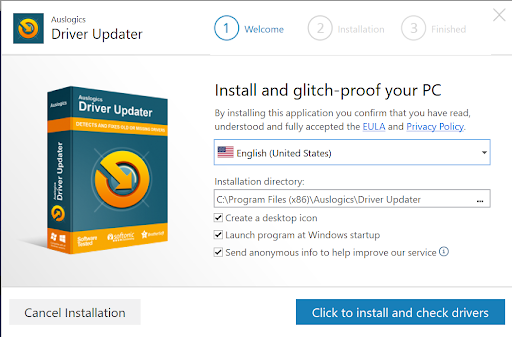

2. Once installed, the program will run a scan of your entire system and check all devices and hardware components installed.
3. Review the scan results and click “Update drivers” to install the recommended updates. If you’d like to only update several drivers, or even just one, you may uncheck the drivers you don’t want processed before clicking the Update button.
For instance, to update just the audio drivers, uncheck the box above the list to deselect all drivers, then scroll to find your audio devices and check the boxes next to them to include them in the update. When done checking, hit the “Update drivers” button to download and install the audio driver updates.
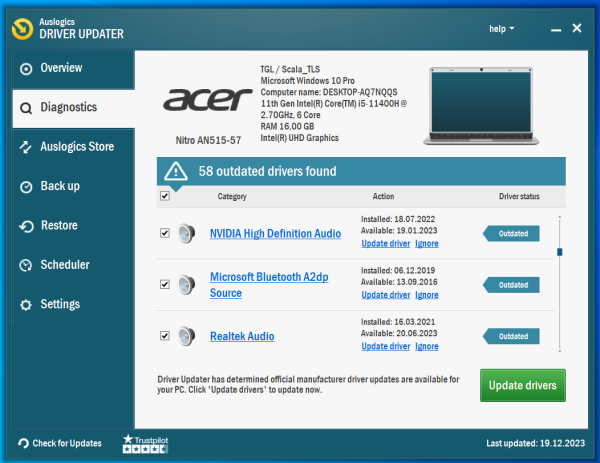

When you click the Update button in Auslogics Driver Updater, the program automatically creates a backup of the drivers to be updated, so that you can roll back the changes if you aren’t happy with the results. After the updates are installed, check to make sure the device is working smoothly. If there have been any functionality improvements or new features introduced with the update, you’ll be able to start enjoying them right away.
After you are done with the audio drivers, you’ll know how to refresh graphics drivers too: just repeat the steps, but select your graphics card(s) this time. Do the same with your Wi-Fi and other network adapters. It is best to update drivers one at a time or in small batches, so that if any issues occur, you won’t have to roll back a dozen updates to identify the culprit.
Auslogics’ database has millions of drivers in it and is constantly updated to add newly released versions. What’s also great about using Driver Updater from Auslogics, is that they keep track of any updates that might result in issues, and mark such drivers as potentially faulty. If that happens, the program will recommend earlier versions that are known to be stable instead of the latest ones that are found to cause issues. This is something you won’t get when updating drivers manually.
Conclusion
Now you know how to update your audio drivers to fix sound glitches or enhance your audio experience, how to update your graphics drivers for the best visuals, how to update Wi-Fi drivers for a smoother and faster connection, or update any other drivers to stop existing or prevent potential PC malfunctions. Whether you choose to go with the manual option or install the smart Driver Updater from Asulogics, you can now take better care of all your hardware and devices, and keep your system working like a well-oiled machine for longer.
If after updating your drivers you still find that some hardware components or devices could use an upgrade, be sure to check out some useful guides and reviews on all things tech.









